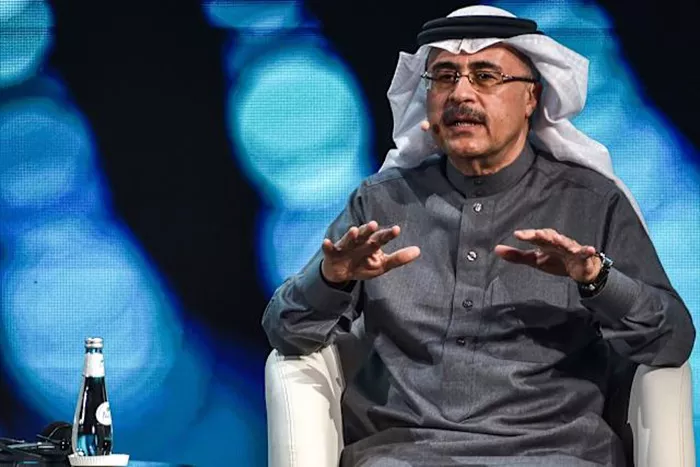As CERAWeek 2025 draws to a close in Houston, global oil and gas industry leaders, including C-suite executives, ministers, and top officials, have weighed in on the future direction of the sector. At the forefront of the discussion is the ongoing debate over whether tariffs, trade, and competition will overtake security, affordability, and sustainability as the primary factors shaping energy markets and policy. However, one of the most notable moments of the conference centered on the stark contrast in perspectives between Saudi Aramco’s CEO Amin Nasser and the International Energy Agency (IEA) Executive Director Fatih Birol regarding the future of the global oil industry.
Nasser, a steadfast advocate for conventional energy, made it clear that he believes the transition away from fossil fuels is flawed. “So I pay little attention to forecasts claiming that next year will be peak this, or peak that,” Nasser remarked, indirectly referencing the IEA’s prediction of a peak in global oil demand by the end of this decade.
In response, the IEA countered that a peak in oil demand does not equate to an immediate and sharp decline in fossil fuel consumption. Instead, the IEA anticipates a “plateau” in demand that could last for several years, emphasizing that significant investments in existing oil and gas fields are still necessary to mitigate steep declines in output. Birol reiterated this position during his remarks at the conference, further clarifying that the IEA has never advocated for an abrupt cessation of upstream oil and gas investments. “Even as demand for fossil fuels falls, energy security challenges will remain,” Birol explained, pointing out that the steep declines from existing fields require continued investments to ensure stability.
Republican lawmakers have recently criticized the IEA for what they perceive as an overly enthusiastic endorsement of the energy transition, even threatening to reassess the agency’s funding.
Big Oil’s Dilemma: Combating Emissions Without Cutting Production
As the global energy transition gains momentum, many major oil companies are grappling with the need to reduce their carbon footprints while maintaining high production levels of fossil fuels. Saudi Aramco, the world’s largest oil and gas company, is no exception. The company has set an ambitious target of achieving net-zero emissions by 2050, without curtailing its oil and gas production.
During an exclusive two-day visit by Fortune last May, Aramco unveiled several ongoing research initiatives aimed at reducing emissions while continuing to produce approximately 9 million barrels of oil per day. The company has claimed that breakthroughs in technology could cut emissions by 15% per barrel of oil produced by 2035, equivalent to reducing carbon emissions by 51.1 million tons annually.
Ashraf Al-Ghazzawi, Aramco’s executive vice president for strategy and corporate development, emphasized that the company sees no inherent conflict between reducing emissions and continuing to produce oil. “Combating emissions from these conventional energy sources is a very viable option,” he stated, underlining that the demand for energy, particularly in developing regions, remains exceptionally high.
Ahmad Al-Khowaiter, Aramco’s executive vice president for technology and innovation, also highlighted the company’s focus on efficiency and optimizing existing production. Aramco has expanded its research and development staff significantly since 2010 and is now spending $800 million annually on R&D, with 60% of that investment directed toward sustainability initiatives. “The main pillar of our strategy and technology is efficiency,” Al-Khowaiter noted.
Innovative Solutions to Reduce Carbon Emissions
Aramco has adopted several technologies to help achieve its emissions reduction targets. One of the key strategies is carbon capture, utilization, and storage (CCUS). At its Hawiyah gas plant, Aramco captures carbon emissions during oil and gas production, then transports and injects the captured carbon into an oil well to boost recovery. The company is also working to reduce the cost of carbon capture by 50%, making it more commercially viable.
In December, Aramco entered a partnership with Linde Plc and Schlumberger Limited to develop a 9 million-ton-per-year CCUS hub at Jubail. The project, expected to come online by 2027, will be a major step in Aramco’s efforts to reduce its environmental impact while continuing to produce oil.
Another part of Aramco’s strategy involves the production of blue hydrogen. The company plans to produce 11 million tonnes of blue ammonia by 2030 from its Jafurah natural gas field. However, CEO Amin Nasser acknowledged the challenges of finding buyers for blue ammonia, citing the high production costs of blue hydrogen. “It is very difficult to identify any off-take agreement in Europe,” he said, referring to the challenges in securing deals for this low-carbon alternative.
Despite these challenges, Aramco remains confident in its ability to balance the energy transition with its traditional fossil fuel operations. “We were never an either-or company. Aramco provides a great example where emissions can be dealt with, it can be managed,” Al-Ghazzawi concluded.
As the global energy landscape continues to evolve, Aramco’s ability to navigate the fine line between maintaining oil production and reducing emissions will be closely watched. The company’s ongoing investments in technology and research are aimed at ensuring that fossil fuels continue to play a key role in the energy mix for years to come.

